1. Increased Production Efficiency: 3D printing technologies can help reduce the complexity and cost of production for end of arm tooling. By replacing complex components with 3D prints, manufacturers can minimize the time and cost associated with traditional manufacturing processes, resulting in improved production efficiency.2. Improved Design Flexibility: 3D printing technology enables manufacturers to create end of arm tooling with highly customized designs that can be tailored to specific applications. This allows manufacturers to create components with a variety of shapes and sizes, ensuring that the end of arm tooling can be adapted to any specific needs or requirements.3. Improved Durability: 3D printed parts are often made from durable and long-lasting materials, such as ABS plastic and Nylon. This ensures that the end of arm tooling is capable of withstanding the wear and tear of regular use in industrial applications.4. Reduced Waste: 3D printing technologies enable manufacturers to produce components with minimal waste. By eliminating the need for traditional manufacturing processes, 3D printing can reduce the amount of materials used and the length of time needed to produce components. This can help to reduce the overall cost of the end of arm tooling.5. Enhanced Safety: 3D printing technologies can help ensure that the end of arm tooling is designed to comply with safety regulations and other industry standards. By using 3D printed parts, manufacturers can minimize the risk of accidents and improve the overall safety of their operations.
1. Increased print accuracy: Digital anatomy printing offers more accurate and precise prints than traditional anatomical printing methods. This means that medical professionals can obtain more detailed and accurate images of organs and tissues. 2. Faster printing: Digital anatomy printing is faster than traditional printing methods, allowing medical professionals to obtain their images faster and with less cost.3. Increased printing options: Digital anatomy printing offers more options than traditional methods. This means that medical professionals can choose from a range of printing materials and resolutions to obtain the best quality images.4. Reduced costs: Digital anatomy printing reduces costs associated with traditional anatomical printing methods. This means that medical professionals can obtain high-quality images without the need to spend a large amount of money.5. Increased patient safety: Digital anatomy printing increases patient safety by providing medical professionals with more detailed images of organs and tissues. This allows for more accurate diagnoses and treatment plans.6. Improved patient experience: Digital anatomy printing improves the patient experience by providing medical professionals with more detailed images of organs and tissues. This allows medical professionals to better explain the anatomy to the patient. 7. Reduced waste: Digital anatomy printing reduces the amount of waste associated with traditional printing methods. This means that medical professionals can obtain their images without having to generate excess waste. 8. Improved research: Digital anatomy printing improves research capabilities by allowing medical professionals to obtain detailed images of organs and tissues for further analysis. This helps researchers gain a better understanding of anatomy and physiology.
